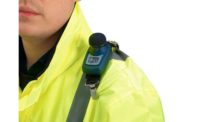AIHA and eight other leading scientific organizations have endorsed recommendations for Occupational Safety and Health Administration (OSHA), Centers for Disease Control and Prevention (CDC), National Institute for Occupational Safety and Health (NIOSH), and other federal agencies to create specific guidelines for workers and communities related to the aerosol transmission of the virus SARS-CoV-2, which causes the disease COVID-19.
The recommendations respond to the federal agencies' delay in acknowledging the capability for the SARS-CoV-2 virus to infect people via the inhalation of virus-laden aerosols—that is, small airborne droplets—and issue appropriate guidance. As of October 2020, the World Health Organization (WHO) and the CDC had yet to alter protection guidelines for workers and communities to address SARS-CoV-2 aerosol transmission.
“As businesses open and workers across many industries return to work, the time is now for our federal agencies to establish complete guidelines addressing worker safety,” said AIHA CEO Lawrence D. Sloan, CAE.
The Joint Consensus Statement, endorsed by AIHA and the other organizations, summarizes what occupational health professionals and scientists currently know about airborne SARS-CoV-2 transmission and outlines recommendations that call for regulation, research, and funding towards airborne transmission prevention practices. These recommendations include:
- That in light of concerns about aerosol transmission of SARS-CoV-2, the CDC and state health departments review their guidance for occupational prevention and respiratory protection.
- That OSHA issue a temporary emergency standard for SARS-CoV-2 or COVID-19, harmonizing diverse state and departmental rules and guidelines within a single federal standard to ensure a unified national approach to worker protection.
- That OSHA continues the rulemaking process for an infectious disease standard applicable to all industries and issues it as soon as possible.
- That federal funding is provided to support state, local, and professional efforts to develop workplace hazard assessment and control programs that recognize airborne exposure routes and prioritize workplace engineering and administrative controls. This federal funding would support:
- Research into the roles and designs of dilution and local-exhaust ventilation in a wide variety of workplaces.
- Development and deployment of effective, simple-to-use, inexpensive ventilation assessment tools and methods.
- Respiratory protection programs, including training and fit testing, for all essential industries that lack the necessary resources and expertise to establish effective respiratory protection programs on their own.
- That NIOSH and other federal health agencies receive additional funding to address research gaps.
- That federal priority goes to providing frontline workers with better respiratory protection options, including elastomeric and powered air purifying respirators. This would free up stocks of filtering facepiece respirators for other healthcare personnel and all other essential workers whose jobs involve prolonged or close contact with coworkers or the public.
- That the Defense Production Act is fully implemented to address the critical national shortages of respiratory protection equipment, personal protective equipment (PPE), and medical supplies.
AIHA, the association for scientists and professionals committed to preserving and ensuring occupational and environmental health and safety, endorsed these recommendations with the following scientific societies:
- American Association of Occupational Health Nurses
- Association of Occupational Health Professionals in Healthcare
- American Conference of Governmental Industrial Hygienists
- American Public Health Association-Occupational Health and Safety Section
- International Safety Center
- National Association of Occupational Health Professionals
- Organization for Safety Asepsis and Prevention
- Workplace Health Without Borders.
About AIHA
AIHA is the association for scientists and professionals committed to preserving and ensuring occupational and environmental health and safety in the workplace and community. Founded in 1939, we support our members with our expertise, networks, comprehensive education programs, and other products and services that help them maintain the highest professional and competency standards. More than half of AIHA's nearly 8,500 members are Certified Industrial Hygienists and many hold other professional designations. AIHA serves as a resource for those employed across the public and private sectors as well as to the communities in which they work. For more information, please visit www.aiha.org.
AIHA’s Back to Work Safely guidelines, designed for small to mid-size businesses in 27 sectors, provide recommendations on PPE; engineering controls such as ventilation, enhanced filtration, and physical barriers; enhanced cleaning and disinfection; worker personal hygiene; and physical distancing. All these guidelines are available for free in both English and Spanish. In addition to the BTWS guidelines, AIHA has free, detailed resources on engineering controls, such as:
- Guide for Recovering from COVID-19 Building Closures
- Reducing the Risk of COVID-19 Using Engineering Controls
- Employers Guide to COVID-19 Cleaning and Disinfection in Non-Healthcare Workplaces
- Effective and Safe Practices, Guidance for Custodians, Cleaning and Maintenance Staff
- Occupational Safety and Health Guide for Surface Disinfection Practices Using Germicidal Ultraviolet Radiation



